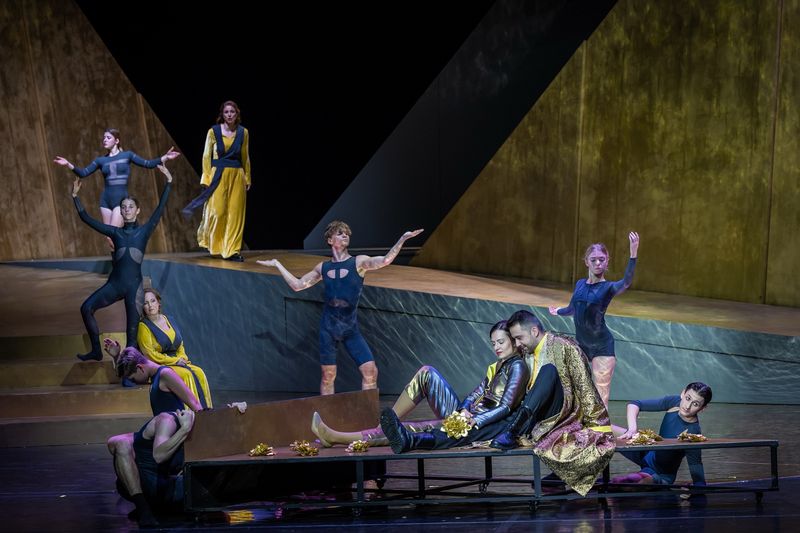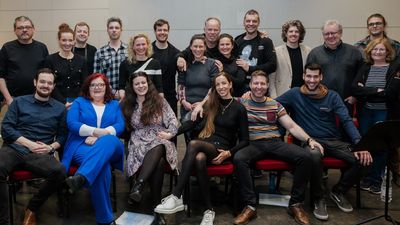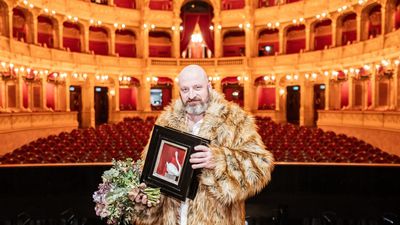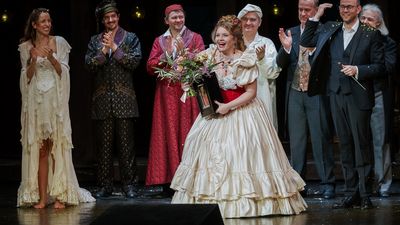
Purcell's baroque opera is presented by the Hungarian State Opera at the Eiffel Art Studios as part of the MVM OperAdventure for secondary school students, staged by director and choreographer Dóra Barta. The productions, featuring a triple cast, is open to the general public on 22 October, following the series intended for students between 13 and 21 October 2022.
Following the destruction of the city, Aeneas, the Trojan hero, flees to Carthage, where he falls in love with its queen, Dido. In Purcell's work, the story taken from the famous epic Aeneid by the ancient Roman poet, Virgil, is supplemented with an evil Sorceress. Thus, it is not Mercury who reminds Aeneas of his mission of founding the new Troy in Italy, the future Rome, but an evil spirit assuming the form of the divine messenger. And although, seeing Dido's torment, Aeneas would even defy the (supposedly) divine command, the queen, who finally succumbs to her pain, shows her strength one last time and sends her lover on his way.
Dido & Aeneas, composed in the last 1680s, is the only actual opera by the highly influential English Baroque composer Henry Purcell. The first known performance of one-hour long piece consisting of a prologue and three acts, took place at a girls' school in London, probably in 1689. The play was soon forgotten afterwards, its modern rediscovery in 1895 can be linked to the 200th anniversary of Purcell's death, when students of the Royal College of Music in London staged it again. The Hungarian premiere of the opera took place in 1938 at the Opera House, directed by Kálmán Nádasdy, which ran for five performances only. Later, it was staged by András Békés at the OPERA in 1988, and was seen 25 times by the audience of the Ybl Palace in a double bill with the premiere of Mario and the Magician by János Vajda.
A darab látványvilágát Tihanyi Ildi díszletei, Kovács Andrea jelmezei és a Katonka Zoltán tervezte világítás is színesíti, dramaturgja Almási-Tóth András, az OPERA művészeti igazgatója. A hármas szereposztásban látható produkcióban a főbb szerepeket Balogh Eszter / Mózer Zsófia / Kun Ágnes Anna (Dido), Najbauer Lóránt / Erdős Attila / Kósa Lőrinc (Aeneas), Brassói-Jőrös Andrea / Molnár Ágnes / Zemlényi Eszter (Belinda) és Meláth Andrea (Varázslónő) alakítják, a Magyar Állami Operaház Zenekara és Énekkara mellett a Magyar Táncművészeti Egyetem hallgatói működnek közre. Az előadásokat Bartal László és Hámori Máté vezényli.
The performance is now being staged by the OPERA at the Eiffel Art Studios as an introductory opera performance for secondary school students as part of the MVM OperAdventure by Dóra Barta, who recently staged the ballet-opera Les Enfants Terribles by Philip Glass here. The choreographer-director intends the performance to be an inaugural theater performance, in which she also wants to make the young people aware of changes in the attitude towards love over the centuries. The staging is a true Gesamtkunstwerk, in which the 17th-century adaptation of the ancient story is complemented by contemporary musical interludes by Bence Farkas, while dance is also an important component in addition to music and singing. The production features sets by Ildi Tihanyi, costumes by Andrea Kovács, and lighting designed by Zoltán Katonka. Dramaturg of the piece is András Almási-Tóth, artistic director of OPERA. The triple cast features Eszter Balogh / Zsófia Mózer / Anna Ágnes Kun as Dido, Lóránt Najbauer / Attila Erdős / Lőrinc Kósa as Aeneas, Andrea Brassói-Jőrös / Ágnes Molnár / Eszter Zemlényi as Belinda, and Andrea Meláth as the Sorceress. The dance sequences are performed by students of the Hungarian Dance Academy, the Hungarian State Opera Orchestra and Chorus are conducted by László Bartal and Máté Hámori.


